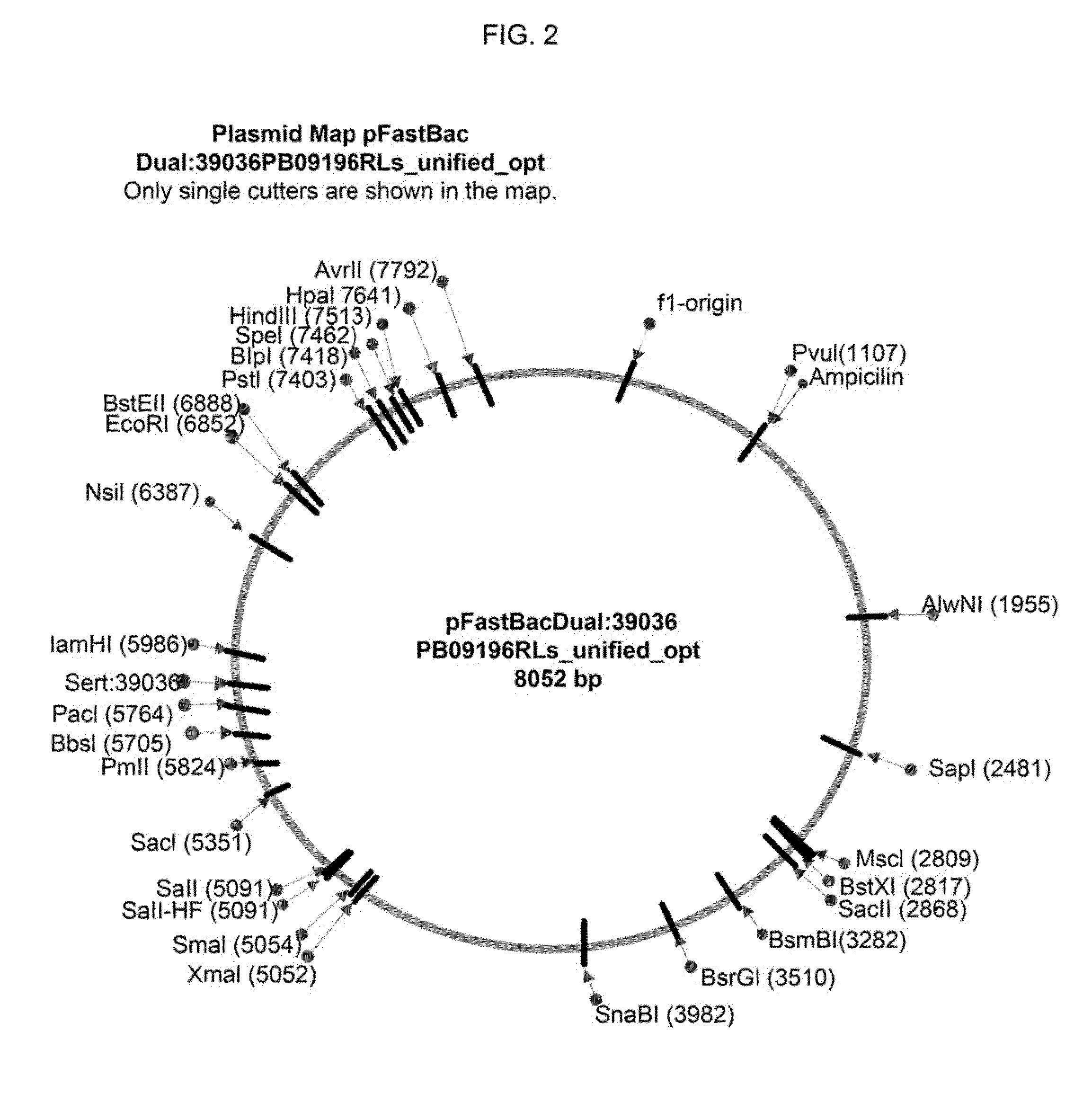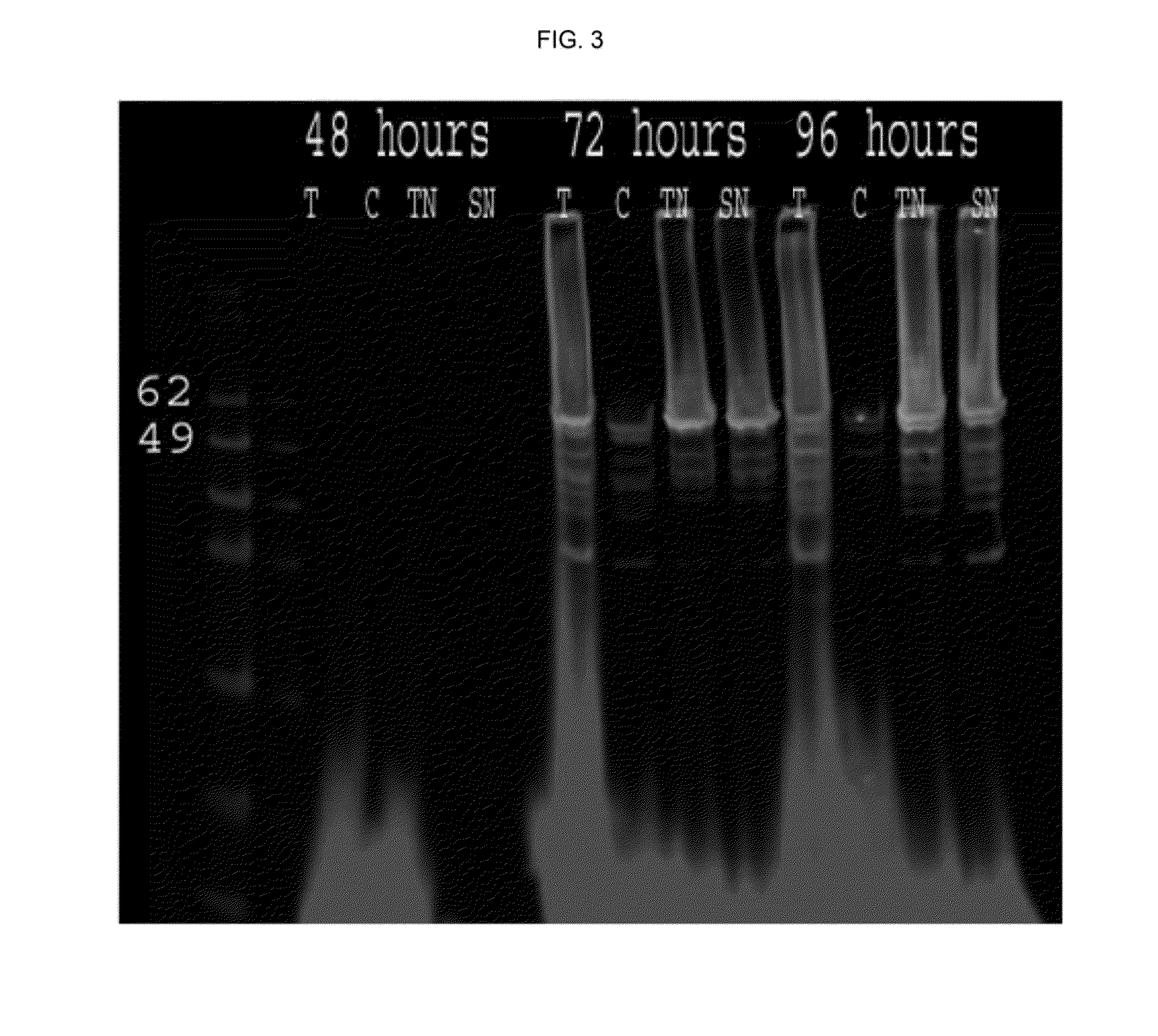Virion Derived Protein Nanoparticles For Delivering Diagnostic Or Therapeutic Agents For The Treatment Of Dermatology Related Genetic Diseases
a technology of derived protein and diagnostic or therapeutic agent, which is applied in the direction of dermatological disorders, drug compositions, peptide/protein ingredients, etc., can solve the problems of difficult diagnosis, severe compromise of the quality of life of patients and their families, and costly and time-consuming multidisciplinary approaches
- Summary
- Abstract
- Description
- Claims
- Application Information
AI Technical Summary
Benefits of technology
Problems solved by technology
Method used
Image
Examples
example 1
[0086]Production and Purification of Capsid Proteins in Host Cells and In Vitro Reassembly into VLPs
[0087]Suspension cultures of Sf9 insect cells were maintained in serum-free Sf-900™ II medium (Invitrogen, Lide Technologies) and expanded from shake flasks to WAVE bioreactors™ (GE Healthcare Lifesciences). Approximately 2 L of shake flask culture was utilized to seed the 10 L WAVE bioreactors™ at an initial density of 4×105 cells / ml.
[0088]Once the actively growing culture reached a density between 1.5-2×106 cells ml, it was infected with a recombinant baculovirus stock for HPV16L1 or HPV 16 / 31 mutant and a HPV16L2 at an MOl of 5. Recombinant baculovirus stocks were produced, as described herein (Table 1, FIG. 2). To generate the recombinant baculovirus for HPV16 / 31 L1 production, the pFastBac™ plasmid (Invitrogen, Life Technologies) (FIG. 3) containing 16 / 31 L1 DNA sequence (SEQ. ID No.1) was used. To generate the recombinant baculovirus for HPV16L2 production, the pFastBac™ plasmid...
example 2
[0100]Production of Mutant L1 * and L2 Capsid Proteins in Mammalian Cell System
[0101]Similarly to Example 1 described above, a mammalian culture system is used to produce mutant L1*(16 / 31) and L2 capsid proteins. Plasmids containing human-optimized codon sequences are used for this purpose (SEQ. ID No. 5) and a general protocol is followed (Buck, C. B., et al. (2005) Methods Mol. Med., 119: 445-462, which reference is incorporated herein).
example 3
[0102]Assembly into VLPs from Capsid Proteins
[0103]Capsid proteins isolated from insect cells were assembled into VLPs as described. Dynamic light scattering (DLS) demonstrates presence of capsid proteins in monomeric and oligomeric forms (<10 nm) after harvest and prior to the loading procedure. After the reassembly in presence of the nucleic acid payload, VLPs are seen by DLS (50-70 nm diameter) (FIG. 5).
PUM
| Property | Measurement | Unit |
|---|---|---|
| Therapeutic | aaaaa | aaaaa |
Abstract
Description
Claims
Application Information
 Login to View More
Login to View More - R&D
- Intellectual Property
- Life Sciences
- Materials
- Tech Scout
- Unparalleled Data Quality
- Higher Quality Content
- 60% Fewer Hallucinations
Browse by: Latest US Patents, China's latest patents, Technical Efficacy Thesaurus, Application Domain, Technology Topic, Popular Technical Reports.
© 2025 PatSnap. All rights reserved.Legal|Privacy policy|Modern Slavery Act Transparency Statement|Sitemap|About US| Contact US: help@patsnap.com



